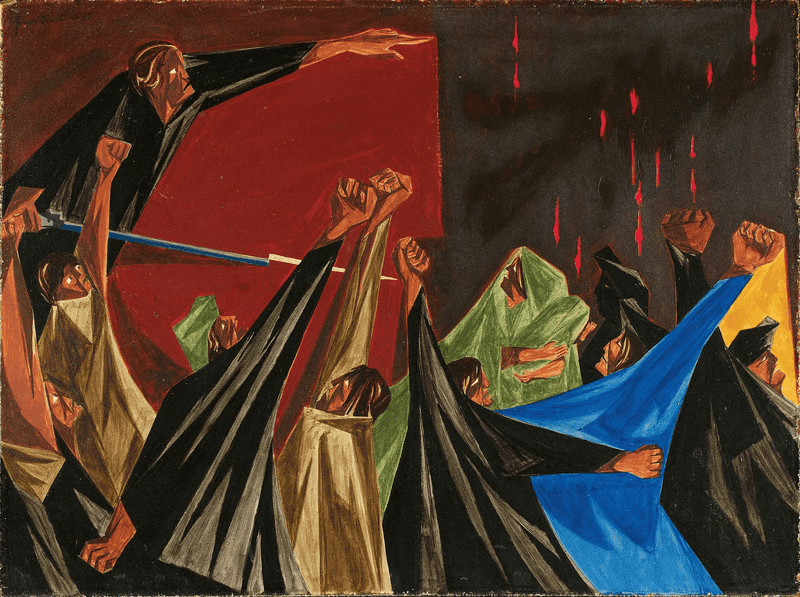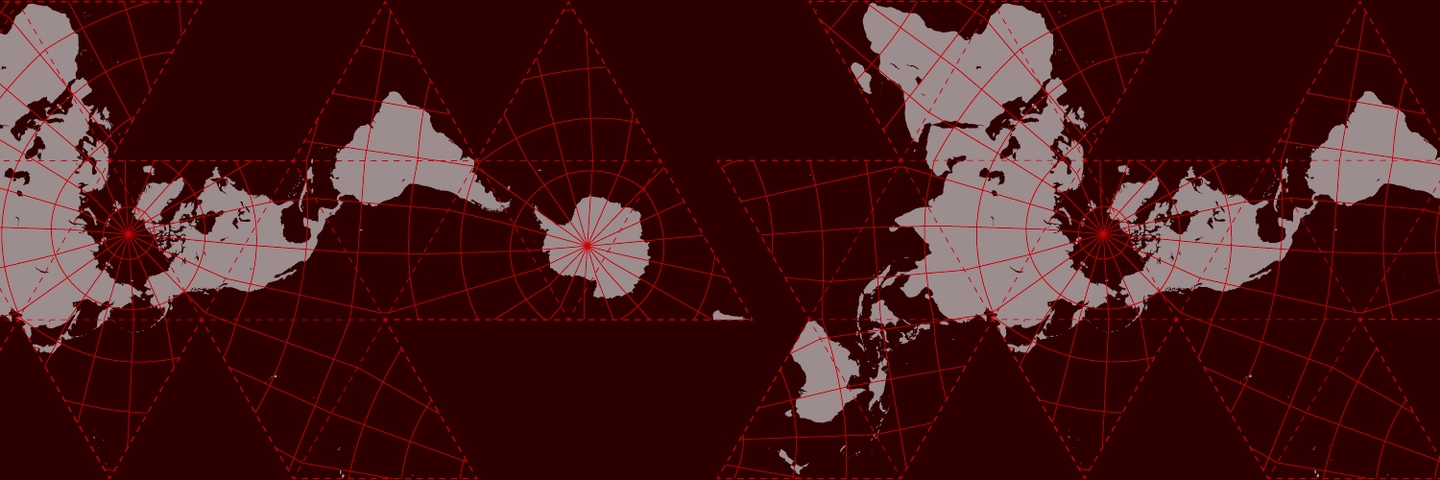
First published in Issue 43 of The Internationalist.
This excerpt draws from Hardt’s introduction to his forthcoming book, Subversive Seventies.
That we have had nothing to do with terrorism is obvious.
That we have been “subversive” is equally obvious.
Between these two truth lies the key issue at stake in our trial.
— Militants of Autonomia awaiting trial in Rebibbia Prison, Rome, 1983
The 1970s was a decade of subversives. Politicians and their generals, police chiefs and secret service agents, conservative journalists and intellectuals saw “subversives” everywhere, challenging authority, laying siege to the established order, undermining the time-honored way of life. This mentality was so flexible it could designate as subversive indigenous peasant armies and gay liberation organizations, self-organized industrial workers and antinuclear activists, revolutionary feminists and Black liberation militants. Every corner of the Left was fertile ground for subversive elements, which the forces of order had to root out and destroy— a project they pursued with zeal and brutality. The battle against subversives in the 1970s legitimated extreme forms of repression and opened the counterinsurgency playbook for use against a range of domestic enemies. Police and military repression of the Left rose to extreme levels and took a wide variety of forms with varying degrees of lethal and nonlethal force, including disinformation campaigns, surveillance, infiltration, extralegal incarceration, targeted assassinations, mass “disappearances,” and torture1.
It is tempting, given all the mystifications it evokes and the violence it justifies, simply to discard the term “subversive.” But it is more useful to approach the term from the other side and embrace it. After all, those engaged in the progressive and revolutionary movements of the 1970s were in fact (and understood themselves to be) subversives. Instead of working within the system, they aimed to undermine the bases of established authorities and transform the fundamental structures of society. These activists were not satisfied with limited social and political reforms or partial alleviation of the suffering and exploitation of the subordinated if this meant leaving the foundations of the established order intact. Liberation was the core principle that guided a wide spectrum of movements, from women’s liberation and the liberation of colonized peoples to Black liberation, gay liberation, and proletarian liberation. Subversion and liberation thus go hand in hand, and only together can they make another world, a better world, possible. I propose to return to the subversive seventies, then, not from the perspective of those in power desperately clinging to the established order but rather from that of those striving to change it.
Many books have been written (and many more are still needed) about the regimes of domination that emerged in the 1970s: brutal military dictatorships in Latin America, Turkey, and South Korea; the birth of neoliberalism along with the attack on labor unions and the dismantling of welfare structures; the oppressive authority of state socialisms; and much more. This book is about the other side.
In the following chapters, I select and analyze social and political movements that are subversive in a double sense: they seek to dismantle and overthrow the social structures of domination while, at the same time, constructing the bases for liberation. These are, in fact, the ones most relevant for our contemporary political situation, in part because they challenged political and economic structures that were emerging at the time and still rule over us today. The subversive seventies constitute a first essai to confront our current conjuncture, a first test of the terrain2. They offer us, in other words, not only initial analyses of today’s structures of economic and political domination, and not only effective forms of critique and resistance against them, but also experiments with alternative social and political relations on the path to liberation3.
Concepts Generated in the Movements
The array of progressive and revolutionary movements across the globe in the seventies was extraordinarily varied, and each should be appreciated and evaluated in its own singular context. And yet, if one takes a step back to view the broad international landscape, some coherent patterns emerge, which are particularly evident in the concepts that are produced by and circulate among the movements. I propose to interpret the movements in terms of their concepts, but by that I am not referring primarily to what intellectuals had to say about them. We need to cast aside the false assumption of a division of labor by which intellectuals think and activists act, and to recognize the value of theorizing advanced collectively in the movements themselves. Part of the work of political movements, especially revolutionary ones, in fact, is to invent concepts.
Autonomy is one concept that characterized the aspirations of a wide range of progressive and revolutionary movements of the seventies. Radical industrial workers, for instance, while taking control of their own struggles, declared their autonomy not only from the factory bosses but also from the leadership and dictation of the dominant unions. Industrial workers in a range of national contexts created collective decision-making structures to determine themselves when to begin a strike and when to end it, whether to occupy a factory and how to manage it, and even when to take up arms to defend themselves. (The early 1970s were a high point of industrial class struggle in many countries in terms of both the intensity and number of strikes.) The claim to autonomy was also a strong component of the many movements that employed the strategy of encampment, designed, in most cases, to block large infrastructure projects— an airport, a military base, or a nuclear reactor— by occupying the land, for months in some cases and for years or even over a decade in others. Each encampment effectively declared autonomy from the state and refused the state’s authority to make unilateral decisions over these infrastructure projects. Autonomy in all these cases indicated not only a refusal of authority but also a refusal of structures of representation, claiming decision-making power for those involved regarding the most important issues affecting their lives.
Multiplicity is another conceptual touchstone that runs through the movements, emerging especially clearly from feminist debates. A precondition for the political conception of multiplicity was the recognition, increasingly widespread by the middle of the decade, that the centrality of industrial workers in the revolutionary struggle had come to an end. This was not the end of class struggle or its importance, of course, but the end of the assumed priority of industrial workers and the belief that a workers’ vanguard could lead and unify the revolutionary movement as a whole. (This complex and contrasting development of the peak of industrial workers’ power and the end of their centrality in revolutionary movement will be explored in depth in Part III.) What emerged instead were parallel conceptions of multiplicity: an analysis of power and a strategic proposal. Activists and theorists in the seventies formulated an analysis of power characterized by intersecting identities and multiple structures of domination (capitalist, racial, imperialist, and patriarchal), which anticipated in some respects the notion of intersectionality that developed a decade later. Correspondingly, they forwarded a strategic proposal that feminist, antiracist, anti-imperialist, and anticapitalist struggles be articulated together without priority among them. Similar proposals of strategic multiplicity were also formulated in multiracial political projects, under the banner of “people of color” in the United States, for instance, and within the Black Consciousness Movement in South Africa. In these cases, too, the strategic multiplicity can only function, as we will see below, so long as none of its component parts is given priority over the others.
Democracy is a third concept that resonated widely in the struggles. The notions of revolutionary democracy that proliferated not only stood opposed to authoritarian government and capitalist control but also rejected the established structures of liberal democratic regimes. In summary terms, one could say that this democracy prioritizes participation over representation: universal participation in political decision-making rather than existing schemes of representation that leave power in the hands of the few. Revolutionary movements experimented with investing power in a vast array of commission structures so as to institutionalize democratic participation: work commissions in factories, rural village commissions, neighborhood commissions, and more. And, in some cases, movements found effective means to scale up local decision-making structures to the metropolitan and national levels.
Liberation, finally, maybe the concept that links together all the others and serves as the master concept for the era. Activists were convinced that, through organized struggle, it was possible to change everything, to reinvent society from the ground up. Liberation is not just emancipation— that is, releasing people from their chains in order to participate in the existing society. Liberation requires, in addition, a radical transformation of that society, overturning its structures of domination and creating new institutions that foster freedom. But even that is not enough, because for liberation not only the structures but also the subjects must change, initiating a process of collective subjective transformation. The seventies may be the last period in which numerous large-scale social and political movements had the audacity and confidence to aim unequivocally at liberation and put in practice the means to achieve it.
I know that these concepts presented so briefly remain at an abstract theoretical level. The investigations of the movements in the following chapters, however, will elaborate them in more specific and concrete terms, and, in turn, the concepts will guide my analysis of the political developments. This conceptual approach is particularly appropriate, as I said, because the activists themselves were theorizing collectively, generating these and other concepts as beacons to guide and understand their own struggles.
History of the Present
What most significantly divides the progressive and revolutionary movements of the seventies from those of the sixties are their different relations to the present. Simplifying a great deal, the sixties were a crucial historical turning point that marked the end of an era. The coincidence and accumulation of struggles in that decade, sometimes referred to as the “global 1968”— including anticolonial and anti-imperialist struggles, revolts against state socialist regimes, insurgencies against racial domination, industrial worker rebellions against factory discipline, and more— made the ruling global framework of power as well as disciplinary regimes in each country increasingly ungovernable, and precipitated a series of social, economic, and political crises in the early 1970s4. We can certainly learn from the movements of the sixties, then, both those that were victorious and those that were vanquished— but, fundamentally, they belong to a past world, not ours.
The 1970s, in contrast, mark the beginning of our time. It was a decade of great tectonic shifts in the structures and mechanisms that rule the social order, which scholars have tried to capture from a variety of angles with various terms. Post Industrial society, for instance, took form in the seventies: it was, perhaps paradoxically, as I said, the peak of industrial workers’ power as well as the beginning of its decline. Simultaneously, labor and wage regimes shifted from Fordist to post-Fordist models, initiating an era of increasingly precarious and informal forms of employment. At the same time, neoliberal policies set a course of privatizing public goods, undermining welfare structures, and increasing the gap between rich and poor, while making the state less responsive to social demands and progressive reforms.
Progressive and revolutionary projects adapted to this new context in myriad ways. Since protest had become less effective, for instance, due to the state’s being less responsive to social demands and imposing higher levels of repression (a condition I will later refer to as “the end of mediation”), activists had to move beyond protest and invent new forms of organization and action. At the same time, there was a proliferation and increased visibility of diverse forms of liberation struggle, including those along lines of gender, race, sexuality, and multiple forms of labor. This was due in part, as I said, to the fact that industrial workers could no longer function as vanguard and central protagonists of a unified movement. Activists began to develop modes of articulation among these multiple movements to address these new needs and organize strategically.
These are just some of the ways in which the progressive and revolutionary struggles of the seventies should be recognized as first experiments to challenge our contemporary structures of power and to discover, in these conditions, paths toward liberation. In the chapters that follow, then, I highlight some continuities with the present, emphasizing instances in which movements of the seventies invented early forms of practices and strategies that have blossomed and become central in twenty-first-century movements. I will also indicate some instances in which movements of the seventies were actually ahead of those today, deploying practices of contestation and liberation that did not continue widely in the subsequent decades and have become subterranean currents, which have the potential to spring forth once again.
In the end, then, whether we consider the movements of the seventies inspiring or troubling, they are fundamentally ours. The history of our present begins there. My interest in returning to the seventies is thus not really historical. My aim instead is to use the seventies as a vantage point from which to see more clearly what liberation movements can be and do today.
Image: Struggle by Jacob Lawrence, consisting of 30 panels, was painted during Joseph McCarthy’s Red Scare and the beginning of the Civil Rights movement.
Michael Hardt is an American political philosopher and critical theorist renowned for his study of globalization, political economy, and the changing nature of power structures in the modern world. Hardt co-authored the groundbreaking book Empire (2000) with Antonio Negri, which analyzed the shift from traditional nation-state dominance to a more decentralized and diffuse form of imperial control, often characterized by transnational corporations and supranational institutions.






